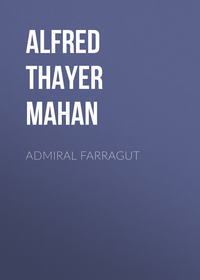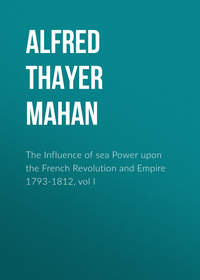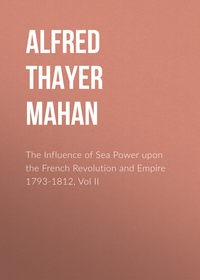 полная версия
полная версияStory of the War in South Africa, 1899-1900
On the morning of the 25th, seeing that Spion Kop was no longer held, Buller assumed command in person, and began to withdraw to the south of the Tugela. This movement was completed on the 27th, the troops reaching their new camps by 10 A.M. of that day.
Thus, unfortunately, ended in failure an expedition concerning which Lord Roberts wrote, "The attempt was well devised, and I agree with Sir Redvers Buller in thinking that it ought to have succeeded." He continues, "That it failed may, in some measure, be due to the difficulties of the ground, and the commanding positions held by the enemy, probably also to errors of judgment and want of administrative capacity on the part of Sir Charles Warren. But, whatever faults Sir Charles Warren may have committed, the failure must also be ascribed to the disinclination of the officer in supreme command to assert his authority and see that what he thought best was done, and also to the unwarrantable and needless assumption of responsibility by a subordinate officer."
It would be presumptuous and unbecoming in an officer not of the land service to express an opinion upon the difficulties of detail encountered in the various operations of this week's work. But the points selected for criticism in the expressions of Lord Roberts just quoted belong to the fundamentals, common to both military professions. The generous wish of Sir Redvers Buller to leave his subordinate untrammelled discretion in the management of an operation intrusted to him, was pushed to an extreme, and was maintained, as is plainly evidenced by his own dispatch, after confidence was shaken. The situation was one familiar, on a smaller scale, to every officer who has ever had command. It is difficult at times to draw the line between fussy interference and reasonable superintendence; yet more difficult to determine the moment when a subordinate must be subjected to the mortification of virtual supersession in the control of a matter that has been committed to him. But these are, after all, only instances of embarrassments common to life, which increase in degree and in number as one mounts the ladder. Whatever may be said in favour of the fullest discretion to a subordinate out of signal distance—and very much indeed must be said for this—nothing can relieve a commander-in-chief only four miles distant of the responsibility, not for his own reputation—a small matter—but for his country's interests, in directing according to his own judgment the great operations of a campaign. However honourable to generosity, it is certainly carrying self-abnegation to an indefensible extreme to leave the decision of attack or withdrawal, of movement by direct attack or by flanking—"by the left"—to a junior, when one's self is on the spot, in actual conversation.
The action of Colonel Thorneycroft in withdrawing raises also the mooted question of when and how the assumption of responsibility in disobeying orders—express or implied, general or particular—is to be justified; a matter on which much unenlightened nonsense has lately been spoken and written in the United States. No general rule, indeed, can be laid down, but this much may surely be re-affirmed—that the justification of so serious a step must ever rest, not on the officer's opinion that he was doing right, but upon the fact, demonstrated to military judgment by the existing conditions, that he was right. Colonel Thorneycroft's intentions were doubtless of the best; the writer cannot but believe that Lord Roberts's sentence will be endorsed by the professions, for the reasons he himself gives.
After the withdrawal across Trichardt's Drift, a week was allowed for repose after the seven days' fighting just undergone. The attempt to reach Ladysmith was then renewed, taking the road by Potgieter's Drift to Brakfontein. It was decided first to get possession of Vaal Krantz, a height three or four miles east of Spion Kop, to the right of the road. The movement began on February 5th, under the immediate direction of Sir Redvers Buller. The same day Vaal Krantz was carried and occupied; but Buller was disappointed in the advantage he hoped from it. He reported that "it was necessary after seizing Vaal Krantz to entrench it as the pivot of further operations, but I found after trying for two days that, owing to the nature of the ground, this was not practicable; it was also exposed to fire from heavy guns which fired from positions by which our artillery was dominated."
As the projected advance depended upon the tenure of Vaal Krantz, and this could not be assured under the circumstances, the attempt had to be abandoned. On the evening of February 7 the British army again retired south of the Tugela, and thence returned to the camps at Chieveley, facing Colenso.
In the operations about Spion Kop from January 17-24, the British losses were: killed, officers 27, men 245; wounded, officers 53, men 1,050; missing and prisoners, officers 7, men 351. Total, 87 officers, 1646 men.
At Vaal Krantz, February 5-7, the losses were: killed, officers 2, men 23; wounded, officers 18, men 326; missing, men 5. Total, 20 officers, 354 men.
CHAPTER VIII
THE RELIEF OF KIMBERLEY AND OF LADYSMITH, AND THE SURRENDER OF CRONJE
The month of February, 1900, which opened with the reverse at Vaal Krantz, proved to be the culminating period of the war. During its course, the tide, which had been running strongly against the British, turned decisively in their favour. Before it closed, Kimberley and Ladysmith had been relieved and Cronje forced to surrender.
After the affair at Magersfontein, December 11, Methuen and Cronje remained confronting one another. The British strengthened themselves upon the line of the Modder, by the railroad; the Boers, from the kopjes of Spytfontein, some three miles to the northward, gradually extended their works east and west until in both directions their flanks rested upon the river. Shelling by guns of long range was carried on intermittingly by both parties, and there were small affairs from time to time, but nothing on a large scale occurred.
After his arrival on January 10, Lord Roberts spent three weeks in Cape Town arranging for his campaign. On the 6th of February he left, accompanied by Lord Kitchener, and on the 9th was at the Modder Camp. On the 11th began the movement which resulted four days later in the relief of Kimberley, and on the 27th of the month in the surrender of Cronje. For these objects, and at this time, 44,000 troops of all arms had been collected near the Modder.
It is needless to say that preparation had preceded execution by more than the two or three days elapsing between Roberts' arrival and the start. At Cape Town he had had interviews with General French, summoned there for that purpose. During January the constant arrival of troops from all quarters at the Modder Camp gave the impression of a purpose to resume the frontal attack and to force the way to Kimberley through Magersfontein; an impression which, produced on the mind of the Boer leader, was itself part of the necessary preparation. On the 3rd of February, General Hector MacDonald, with a brigade of Highlanders, had moved north-west, towards Koodoosberg, where he arrived on the 7th. The movement was in sufficient force to attract the attention of the Boers, and appeared the more plausible because of the disturbed condition of the district; which, although British, was full of Boer partisans showing signs of restlessness. A similar expedition, but less numerous, under Colonel Pilcher, had gone out early in January, capturing forty rebels. While otherwise useful, it seems probably that MacDonald's enterprise was intended chiefly to fasten the enemy's attention in a false direction. On the 8th he was recalled by Methuen, acting under orders from headquarters.
The great projected operation was to turn the eastern left flank of Cronje's position, seizing important drifts, or fords, on the Riet and Modder Rivers by a secret and rapid circuit of cavalry, which should hold them until they were secured by slower moving infantry following on the track. When the last and chief of these, Klip Drift on the Modder, some twenty miles east of Magersfontein, was held by an infantry division, the cavalry's flank would be secured and its advance would then be pressed to Kimberley. While the movement was in progress, Methuen in his old lines on the Modder would hold the enemy in his positions by a demonstration of force seemingly not reduced. If the undertaking were successful, superior British numbers would be planted across the line of Cronje's communications with Bloemfontein, and the cavalry on his rear to intercept retreat in mass to the north. To this turning operation were assigned three divisions of infantry and one of cavalry; the latter was under General French, called from the Naauwport district for this purpose. The infantry divisions were the 6th, General Kelly-Kenny; the 7th, General Tucker; and the 9th, General Colvile. The total force thus engaged in the invasion of the Orange Free State was 34,000; 23,000 infantry and 11,000 mounted men. They were accompanied by 98 pieces of artillery, and by supplies in 700 wagons, drawn by 9,000 mules and oxen.
French's division, three brigades, 4,800 men, accompanied by seven batteries of horse artillery, left Modder River Camp at 3 A.M. Sunday, February 11th. Diverging slightly from the railroad, they marched due south—away from the enemy—seventeen miles to Ramdam, which is about ten miles east of Graspan Station. At sunrise they were out of sight of the empty tents, standing deceitfully behind them. At noon Ramdam was reached, and the division halted till 3 A.M. of the 12th, when it again marched due east for a ford called Waterval Drift, on the Riet River, which it will be remembered is a tributary of the Modder, flowing from south-east to north-west. Reaching there soon after sunrise, the ford was found to be held by a party of the enemy. Covering his change of purpose by a feint upon this position, French swung the rest of his division to the right, and with slight loss forced a passage at De Kiel's Drift, apparently somewhat higher up. That evening he held both sides of the Riet, the enemy having retreated. During the night Kitchener came up with a division of infantry which had made its journey in part by rail, and with which arrived also supply trains, whose slow movement would have delayed unduly the progress of the horse division.
Owing to delays in distributing provisions and fodder, French could not start again until 11.30 A.M. The loss of the five early hours, says an eye-witness, cost 100 horses, which died or failed in the march that day. The goal now was Klip Drift, about twenty-five miles distant. Passing well east of Jacobsdal, suffering intensely from heat and thirst, the division sighted the Modder when still eight miles away. All were much spent, the artillery horses could scarcely drag their pieces, and there was a showing of opposition on the right front; but French, despite the general exhaustion, decided to drive on without halting, lest the enemy, recovering from their surprise, should concentrate to oppose his passage. Thus hastening, the Boers, taken unready, were routed. At 5.35 P.M. French reported back to Roberts, who received the message at De Kiel's Drift, that he had occupied the hills on the north of the river, capturing three of the enemy's laagers with supplies, while Gordon with his brigade had seized Rondeval Drift, four miles west, with a second drift between it and Klip, and two more laagers. Control of both sides of the Modder, and power to operate on either bank freely, were thus assured, provided the infantry followed in time.
That night, February 13-14, the cavalry rested on the north bank, holding the adjacent kopjes, and there remained during the succeeding day, waiting for the infantry. Throughout the 14th the Boers made constant harassing demonstrations, disturbing the rest of the weary men and horses. "But no attack was driven home. 'Could the Boers learn to attack, they would be a formidable foe,' the General once observed. Directly we moved out the attack failed."32 Kitchener in person arrived at midnight, and the 6th Division, "very tired," at early morning of the 15th. The defence of the position was then turned over to Kelly-Kenny, "leaving French free to act,"33 and the cavalry, reinforced by several new regiments from the westward, which raised its numbers to near 10,000,34 prepared for the final rush to Kimberley, some twenty-five miles away.
A few miles from Klip Drift, towards Kimberley, lay an enclosed plain, five miles long by three wide, where a number of Boers were waiting to contest progress. The kopjes controlling entrance had been secured by the British, but the transit had to be forced. The enemy were in position on hills in front, and flanking the lines of advance. Measures were taken to cover the flanks with artillery, and to clear them while pressing forward, otherwise the Boer positions were carried by a charge. "The whole division was set in motion. For nearly five miles in perfect order they galloped on, until the head of the plain was reached. It was a thrilling time, never to be forgotten. Our guns held the enemy on our left, while the 9th and 16th Lancers had cleared the ground on the right. About two miles from the head of the plain the main body was halted to allow the guns from the left to rejoin us, but Broadwood's brigade continued the gallop to the very top of the pass on the left, and the 12th Lancers dismounted and held the kopjes in front. The right front was held by the Household Composite and Gordon's Lancers."35
After a brief stop to re-assemble the march was resumed. Just beyond the head of the plain the chimneys of the mine works at Kimberley became visible—still ten miles distant. Cronje, by this aware of the direction and purpose of the movement, tried to intercept the advance at a place called Benaauwheidfontein Farm, four miles from the town, but he was just too late to occupy the commanding positions. Brushing aside the inadequate force opposing him, French passed on, and about 7 P.M. entered the place, joining hands with the long besieged. Kimberley was relieved, and the British cavalry established on Cronje's rear.
The general situation that evening, Thursday, February 15, was as follows: Methuen at Magersfontein, in front of Cronje; the 7th Infantry Division at Jacobsdal, ten miles to the south-east; the 6th holding the Klip and Rondeval Drifts on the Modder, twenty miles east of the Boer army; the 9th near Jacobsdal, in reserve, ready to move where most needed. Lord Roberts himself was at Jacobsdal, whence his telegrams were dated on the 16th and 17th. Kitchener remained at Klip Drift.
Cronje, who had not believed that the British could make so rapid a march, or take so large a force far from the railroad, saw that not only had he been outwitted and his position become untenable, but that there was no time to lose if he hoped to escape at all. As French slipped by him into Kimberley, he sent word to the camp to get the trains at once in movement, and to start east towards Bloemfontein. This direction of retreat has been criticised,36 and it has been argued that he should have tried to retire to the northward, away from the British divisions already east of him. In this direction a certain proportion of his army did break out. It is to be remembered, however, that not only was Bloemfontein the capital of the Free State, and, therefore, not lightly to be sacrificed, but that his movement was concentric, having regard to Joubert and the bulk of the Boer forces elsewhere. Not only so, but French was north of him; and as it turned out it was French, in virtue of the superior mobility of his cavalry, who headed him off to the eastward, giving time for the British infantry to come up. The trains went with Cronje, and apparently it was his unwillingness to drop them, rather than the direction of his retreat, that lost him. Because men not so encumbered escaped north, it cannot be certainly concluded that he could by the same course have saved his trains.
Be it as it may, Friday morning the 16th found the Boer lines at Magersfontein empty. The presence of British divisions south of the Modder compelled Cronje to take a course north of it. Except for the drifts, the river thus protected his flank; and if he could, by diverging sufficiently, slip undetected past Klip Drift, leaving the easternmost of the British divisions—Kelly-Kenny—in his rear, he might reach the point he aimed at, Koodoosrand Drift, twenty-four miles north-east of Klip Drift, cross there, and so reach the direct road from Jacobsdal to Bloemfontein. This effected, the British would have a stern chase, proverbially long, and in this instance certainly fruitless.
Cronje nearly succeeded. Early on Friday morning the British at Klip Drift saw north of them a great cloud of dust, moving eastward. It was the Boer convoy, in rear of which doubtless was their army. Kitchener sent out mounted infantry to get to the north of the retreating force, while a brigade of foot was directed to keep along the river's bank. Word was sent at once to French in Kimberley, who was employing that day in clearing the country north of the town. The field telegraph being cut by the enemy, he received Kitchener's message late at night. This, after stating Cronje's movements, added that if he, "with all available horses and guns, could head him, and prevent him from crossing the river, the infantry from Klip Drift would press on and annihilate or take the whole force prisoners."37
French left at 3.30 A.M. with one brigade and three batteries, the others to follow as they could with their worn-out animals. The enemy had a long start, but from Kitchener's message it was evident that their march would be steadily harassed and delayed by the frequent necessity of fighting, of resting at times, and by the slow movement of the ox-team. Using utmost speed, at 11 A.M. French's detachment saw the trees lining the Modder's banks, upon which its route had been converging. On the left a fairly large body of men were perceived moving east. A line of hills between these and the British force concealed the latter, who were nearer the river. The horses were ordered to water while the general and staff rode forward to reconnoitre. Reaching a favourable height, they saw, 4,000 yards away, the leading wagons of the Boer convoy just descending to Koodoosrand Drift, where a road from the northward crosses to Petrusberg, on the Jacobsdal-Bloemfontein highway. The batteries were summoned up, being cautioned to move at a walk, lest their dust should draw attention, and at 12.15 P.M. the first shot was fired which told Cronje that at the very last moment, with safety apparently grasped, his passage was about to be disputed.
The Boer general, who for a day and a half had been fighting a constant succession of rearguard actions with Kitchener's infantry, took his measures promptly to meet this new dilemma. He first tried to seize positions of command which would give him control of the ford. In this French was the quicker, and headed him. He then turned his column to the right to a ford called Wolveskraal Drift, four miles below, west of Koodoosrand, and the same distance above Paardeberg Drift, from which his defence has received its name. At Wolveskraal he "laagered" his trains on the north bank of the river, postponing crossing to next day. Either he felt sure that the British infantry, marching afoot, could not come up in time to stop him, or else, unable to reconcile himself to cutting loose from his guns and his wagons, he determined to risk all on the chance of saving them. French, unsupported, could only answer for Koodoosrand.
The decision was critical, and proved fatal. The British 6th Division pressed on untiring after nightfall, aiming to reach Paardeberg, but, missing the precise point, they passed on and halted a mile and a half below Wolveskraal, nearly opposite the ford Cronje intended to use. Though all unknowing, they had taken a commanding position to head him, as French had at Koodoosrand. Behind them was the mounted infantry, which had crossed back from the north side, and also the 9th Division. Before daybreak both these had halted on the south side, at Paardeberg.
When Cronje camped on the afternoon of the 17th, the only chance left him was to cross at once to Wolveskraal, abandoning his guns and wagons. On the morning of the 18th no chance was left, except by outside help, which could come only from the eastward, probably only from Joubert before Ladysmith. Realising this, and to gain time for such assistance to arrive, he took up a defensive position based upon the bed of the Modder.
In broad outline his dispositions were as follows. The bed of the river, which lies nearly east and west, is from fifty to one hundred yards wide and about thirty deep, in soil that lends itself easily to the spade. On both sides, for a mile above and below Wolveskraal Drift, the edges of the banks were trenched, and at either end of these trenches traverses, thrown forward at right angles, served to strengthen against enfilading attack. North of the river, some cannon were placed in advanced works, three-quarters of a mile from the rifle pits, between which and the river, in the open, was the "laager" of ammunition and other wagons. The river trenches described constituted the nucleus and backbone of the Boer defences, but in his first dispositions Cronje occupied the bed of the stream down to Paardeberg, seeking thus to push back as far as possible from his intended crossing the force which he supposed had yet to come up from that quarter. The Boers that surrendered numbered 4,100 men. It may be supposed, therefore, that there were from 4,500 to 5,000 present at the first.
South of the river is grassy plain, at its widest 3,000 yards, shelving gently to the bank. Beyond it there is a rise of fifty feet in the ground. Behind this plain, on the morning of Sunday, February 18, the British had in position the 6th Division and of the 9th the 19th Brigade, besides three regiments of Highlanders. The mounted infantry, that had been pursuing the day before on the north bank, now occupied the river-bed west of Cronje's lines. The artillery present was three batteries—two field and one howitzer—with a single naval gun. On the north bank at daybreak was French's cavalry brigade, which was slightly reinforced during the day, and his horse artillery.
Soon after daybreak fighting began, the Boers opening fire at the west end of their line upon the mounted infantry. The latter replying succeeded in driving the enemy a quarter of a mile up stream. While this was occurring the British began a frontal attack in line from the south—the 6th Division on the right, the 9th on the left, the advance of the infantry line being supported by the batteries, placed 2,000 yards south-east of the Boer laager. French's horse artillery also opened from the north bank. As usual in frontal attacks upon a well-entrenched resolute enemy, the loss of the assailants greatly exceeded the results obtained. By an eye-witness the action was likened to Methuens at the Modder.38 The fire of the batteries, however, was extremely destructive to the Boer laager, causing several explosions, and great distress to the enemy could not but ensue from this injury to their only base.
The frontal attack was supplemented later by efforts directed upon the flanks. Three regiments—one a Canadian—of the 19th Brigade at 9 A.M. crossed at Paardeberg, and thence fought their way a mile up-stream—east—on the north bank. Here they were stopped, and had to extend their line to the northward; after which, by short and desperate rushes, they continued to add by driblets to the ground so far gained. This was strictly a flank attack, and not only shortened by so much the Boer front, but enabled the assailants to enfilade their line in part. The attempt was imitated on the eastern flank by the mounted infantry which, after the arrival of the foot divisions, had moved east from Paardeberg and established themselves on the Boers' eastern flank at Koodoosrand Drift. These crossed at this point at about noon and fought west. An hour later they were supported by the two right—east—regiments of the British line, which by a rush reached the river below Koodoosrand, where a number crossed. These moved west in two parties, in mutual support on either bank.
The frontal attack and the flank movements so far stated summarize the details of this action. Support was sent from time to time as occasion demanded and opportunity offered, especially to the flanking parties. The net result of the day was that Cronje's force, from a development of four miles, was shortened in to two, the British holding the river banks above and below that stretch, with considerable part of their force placed perpendicularly to the river across both the Boer flanks, yet bound together in mutual support by the main body, extended along the southern slope, ready to reinforce in either direction. The flanking parties began immediately to entrench, their lines running, as already intimated, perpendicular to the Boer front, and facing the transverse works which the latter had erected as a protection against enfilading.











